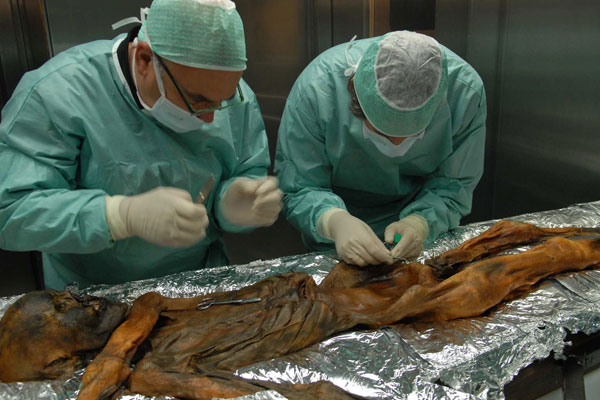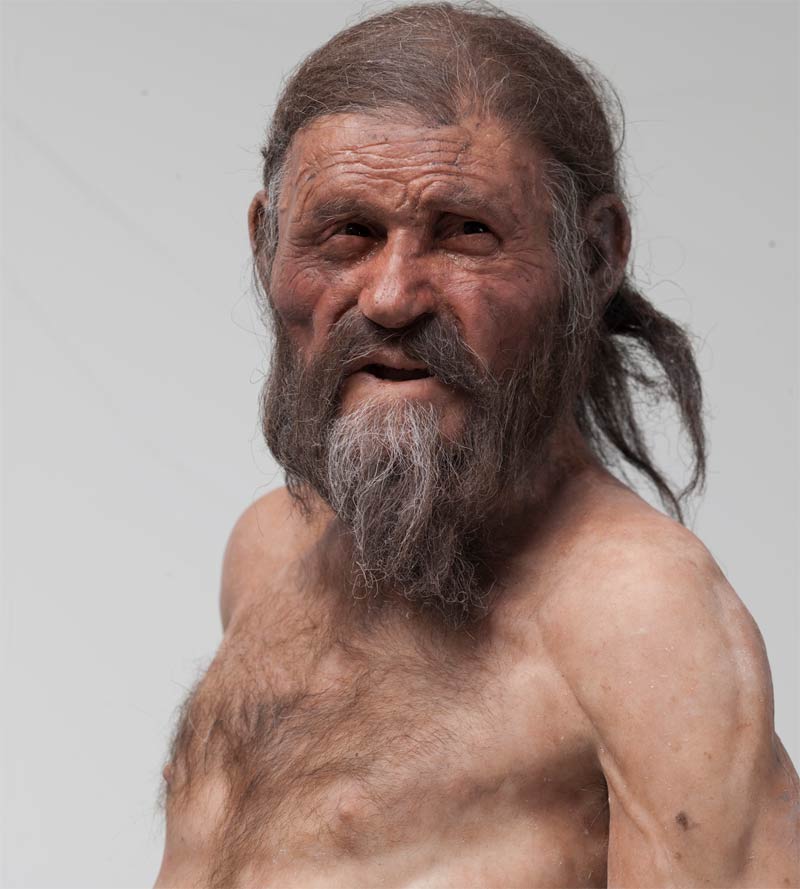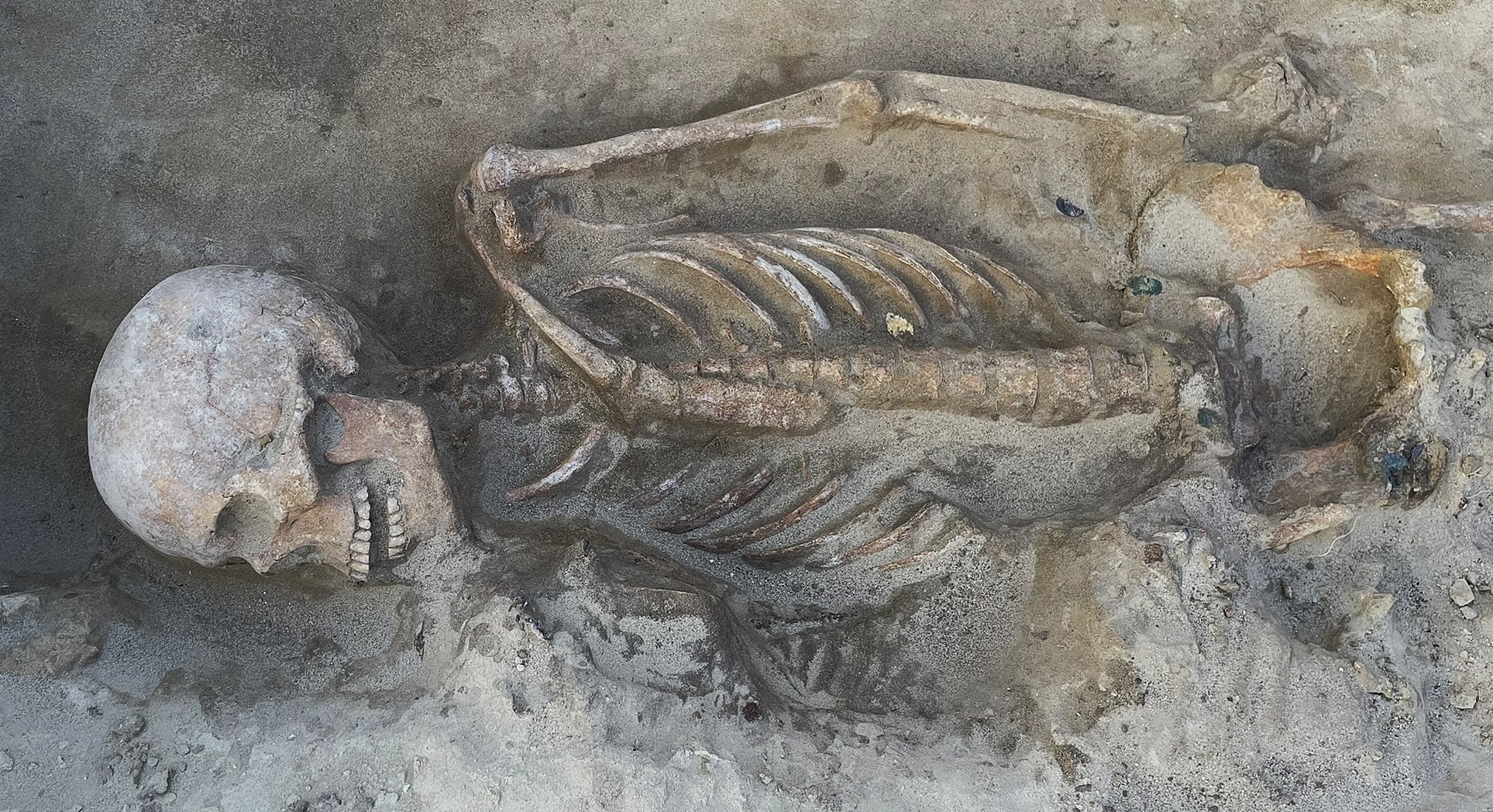Mummy Melodrama: Top 9 Secrets About Otzi the Iceman

Mummy's Tale

In 1991, a pair of hikers in the Ötztal Alps along the Austrian-Italian border stumbled over the frozen, mummified body of an ancient man. The 5,300-year-old mummy, affectionately known as Ötzi, was amazingly well preserved. Since then, scientists have pieced together an incredibly detailed picture of the iceman who lived before, from where he lived to what he ate before dying in the ice.
His job

Based on animal hair from his clothing, Ötzi herded sheep, cows and goats. The skin from his clothing came from domesticated animals, according to a 2008 study in Rapid Communications in Mass Spectrometry. That would make Ötzi a member of the more progressive culture at the time, unlike the more primitive hunter-culture that existed around the same time.
His fashion sense

During the Stone Age, animal skins were all the rage. Most of Ötzi's clothing was badly disintegrated, but researchers did manage to salvage parts of his sheep- and cow-leather shoes, goatskin leggings, bear fur cap, and animal skin loincloth. The iceman also carried a grass mat or cape with him, either to sleep on or shield him from the rain. The ancient pastoralist also sported several tattoos.
What he looked like

Ötzi's body was so well preserved that scientists had a rough idea of what he looked like for years. But in 2011, researchers gave the iceman a makeover. Using 3-D images of his skull, two brothers assembled an extremely lifelike reconstruction of Ötzi's face. The weather-beaten man had deep-set eyes, a long, hooked nose, and a vague resemblance to actor Harvey Keitel. Like other Copper Age men, Ötzi was a diminutive 5 feet 3 inches (1.6 meters) tall and weighed around 110 pounds (50 kilograms).
His relatives

The Tyrolean Iceman's genetic profile most closely resembles modern-day Sardinians. Scientists believe that most of the Neolithic farmers and pastoralists in Central Europe would have had similar DNA. But if Ötzi were to come back today, he might be pretty lonely: a 2008 DNA analysis revealed that his mother's line is likely extinct, although it's possible that Ötzi fathered children whose descendants are living today.
How he died

For years, Ötzi's murder was the world's oldest cold case. The fact that he had an undigested meal in his stomach suggests the Iceman was ambushed, but scientists couldn't agree whether he was bashed over the head or killed by an arrow that nicked an artery in his shoulder. In a 2012 study detailed in the Journal of the Royal Society Interface, scientists analyzed the mummy's red blood cells and concluded that Ötzi bled to death after the arrow wound. The blood cells showed traces of a clotting chemical that quickly appears in human blood after a wound but disappears immediately after; the fact that it was still around suggested Ötzi didn't survive long after the injury.
His last meal

Before being ambushed, Ötzi apparently sat down to a tasty meal of unleavened bread, sloes (fruit of the blackthorn), and deer meat. Scientists also found mosses in Ötzi's stomach. Ötzi may have used the mosses to wrap his food and unintentionally swallowed them, or consumed them while drinking water from a steam. Either way, it probably wasn't a staple part of his diet: The mosses were neither nutritious nor tasty.
Get the world’s most fascinating discoveries delivered straight to your inbox.
His equipment

All evidence suggests Ötzi was quite crafty. The Neolithic herdsmen carried several pieces of equipment when he died, including several wooden tools that were used to make clothing or utensils. His copper axe was a status symbol, indicating that he ranked high in his pastoralist culture. Ötzi was also carrying a bow and arrow, which he had leaned against a tree before he died. (Shown here, a window looking into the Iceman mummy's refrigerated cell at the South Tyrol Museum of Archaeology).
Where he grew up

It turns out, Ötzi wasn't far from home when he died. By analyzing the contents of his stomach, as well as the isotopes (atoms of the same elements with different weights) in Ötzi's body, and the type of equipment he carried scientists concluded that he didn't live in the Alps per se, but spent most of his life in Isack Valley or the lower Puster Valley, in the northernmost part of what is now Italy. However, he probably spent the last 10 years of his life in an area south and west of his previous home, not far from where he died.
His health

Ötzi made it to the ripe old age of 45, but he wasn't necessarily in top condition when he died. Analysis of his skeleton revealed he had bad knees. A 2012 study of the Neolithic herdsman's genome revealed that he was lactose intolerant (sad news for a sheepherder), and was infected with Lyme Disease. And before dying, Ötzi had taken a medicinal herb called hop hornbeam, suggesting that he may have been suffering from nausea or stomach upset.

Tia is the editor-in-chief (premium) and was formerly managing editor and senior writer for Live Science. Her work has appeared in Scientific American, Wired.com, Science News and other outlets. She holds a master's degree in bioengineering from the University of Washington, a graduate certificate in science writing from UC Santa Cruz and a bachelor's degree in mechanical engineering from the University of Texas at Austin. Tia was part of a team at the Milwaukee Journal Sentinel that published the Empty Cradles series on preterm births, which won multiple awards, including the 2012 Casey Medal for Meritorious Journalism.


